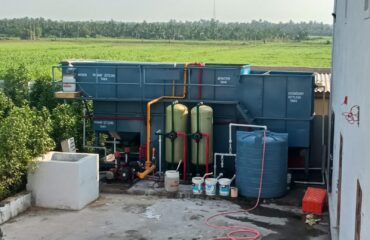Introduction
Agra, a city renowned for the iconic Taj Mahal, also faces the challenges of urbanization and industrialization. As the city progresses, the establishment of an Effluent Treatment Plant (ETP) in Agra becomes imperative to ensure environmental preservation while fostering growth.
Understanding ETPs
An Effluent Treatment Plant (ETP) serves as a vital infrastructure designed to treat industrial and domestic wastewater before its release into the environment. The primary objective of an ETP is to eliminate pollutants and contaminants from the wastewater, ensuring compliance with stringent quality standards.
Significance of ETPs in Agra
1. Protecting Heritage
Agra’s historical landmarks, including the Taj Mahal, rely on a clean environment to maintain their grandeur. ETPs contribute by preventing wastewater contamination of local water bodies and preserving the city’s cultural heritage.
2. Public Health and Well-being
Unprocessed wastewater contains harmful pathogens and toxins that can jeopardize public health. ETPs play a pivotal role in safeguarding community well-being by treating wastewater before its introduction into the ecosystem.
3. Balancing Progress and Ecology
As Agra experiences urban growth, the associated increase in wastewater generation necessitates proper treatment. ETPs strike a balance by allowing development to proceed without compromising the local environment.
4. Regulatory Compliance
Stringent environmental regulations mandate the appropriate treatment of wastewater. ETPs ensure that industries and establishments in Agra adhere to these regulations, promoting responsible waste management.
Essential Components and Processes
- Preliminary Treatment: Removal of large debris and solids from wastewater through processes like screening and grit removal.
- Primary Treatment: Separation of suspended particles and sediments using gravity settling.
- Secondary Treatment: Microbial breakdown of organic matter in the wastewater through biological processes.
- Tertiary Treatment: Advanced filtration and disinfection to achieve desired water quality.
- Effluent Reuse: Treated water can be repurposed for non-potable applications, reducing freshwater consumption.
Addressing Challenges and Solutions
- Industrial Contributions: Agra’s industries contribute significantly to wastewater pollution. Collaborative efforts between industries and local authorities can yield effective waste management strategies.
- Community Participation: Raising awareness among residents about proper wastewater disposal can lead to reduced pollution levels.
- Technological Integration: Incorporating cutting-edge technologies in ETP design can enhance treatment efficiency and capabilities.
Conclusion
Agra’s heritage and urban growth need not be at odds with each other. The establishment of an Effluent Treatment Plant in Agra reflects a commitment to responsible progress. ETPs go beyond wastewater treatment; they embody Agra’s dedication to protecting its environment, heritage, and future.





